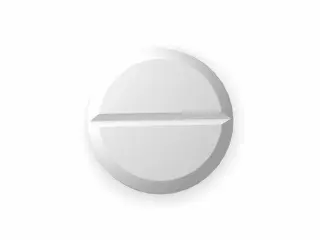Diuretics
Explore a wide range of effective diuretics designed to help reduce excess fluid and support healthy blood pressure. Find trusted brands and reliable options to meet your needs. Shop now for fast, discreet delivery and improve your well-being.
Diuretics are medications that help the body get rid of excess salt and water through urine. They are often prescribed to treat conditions such as high blood pressure, heart failure, kidney problems, and edema. Diuretics are commonly known as water pills. They reduce fluid buildup, lower blood pressure, and make it easier for the heart to work.
Several diuretics are popular in pharmacy and medicine today. Each works in a slightly different way and has specific uses and side effects.
Aldactone (Spironolactone) is a potassium-sparing diuretic. It prevents the body from losing too much potassium, which is important for muscle and nerve function. Aldactone is often used for heart failure, liver cirrhosis, and conditions causing excess aldosterone. It can also treat high blood pressure. The medication may cause side effects like breast tenderness, dizziness, or increased potassium levels. Regular blood tests are needed to check potassium during treatment.
Esidrix contains hydrochlorothiazide, a thiazide diuretic. It works by preventing the kidneys from absorbing too much salt, causing more urine production. Esidrix is commonly prescribed for swelling and hypertension. It is effective but can lead to low potassium and dehydration if not monitored. Patients often feel thirsty or weak when using Esidrix. Doctors often suggest taking potassium supplements along with it or eating potassium-rich foods.
Furosemide, also known as Lasix, is a loop diuretic. It acts on the loop of Henle in the kidney to produce a strong diuretic effect. Furosemide is used for severe fluid retention due to heart failure, kidney disease, or liver disease. It works quickly to remove excess fluid but can cause potassium loss, low blood pressure, and dehydration. Lasix is a brand name for furosemide and they are the same medication. Because of its potency, careful dosage and monitoring are required.
Lozol contains indapamide, which is a thiazide-like diuretic. Like hydrochlorothiazide, it increases urine output but also relaxes blood vessels. Lozol is often prescribed for high blood pressure and edema. It has a longer duration of action compared to some thiazide diuretics. Lozol can cause side effects such as dizziness, muscle cramps, and electrolyte imbalances. Monitoring blood pressure and electrolytes is important during therapy.
Microzide is another brand of hydrochlorothiazide. It is widely used in treating hypertension and edema related to heart, liver, or kidney disease. It works by promoting sodium and water excretion. Microzide is effective for lowering blood pressure and reducing fluid buildup. Side effects can include increased urination, dehydration, and changes in electrolyte levels, especially low potassium.
Choosing the right diuretic depends on the patient’s health condition and response to treatment. Some diuretics remove more fluid but may lead to more side effects. Others are milder but may be safer for long-term use. Doctors often combine diuretics with other medicines, especially for high blood pressure control.
Common side effects of diuretics include increased urination, dizziness, dehydration, and electrolyte imbalances. Patients should drink enough fluids and monitor symptoms. Potassium levels are particularly important because both high and low potassium can cause serious problems. Patients may be instructed to avoid excessive salt and alcohol while taking these medications.
Diuretics are vital in managing many chronic conditions. They reduce fluid overload, ease breathing in heart failure, and help protect the kidneys and heart. Understanding the differences between medications like Aldactone, Esidrix, Furosemide, Lozol, and Microzide can help patients make informed decisions with their healthcare providers.
Overall, diuretics are effective and commonly used drugs. They improve quality of life for many patients. Regular medical follow-up and proper use are key to safe and effective treatment.





